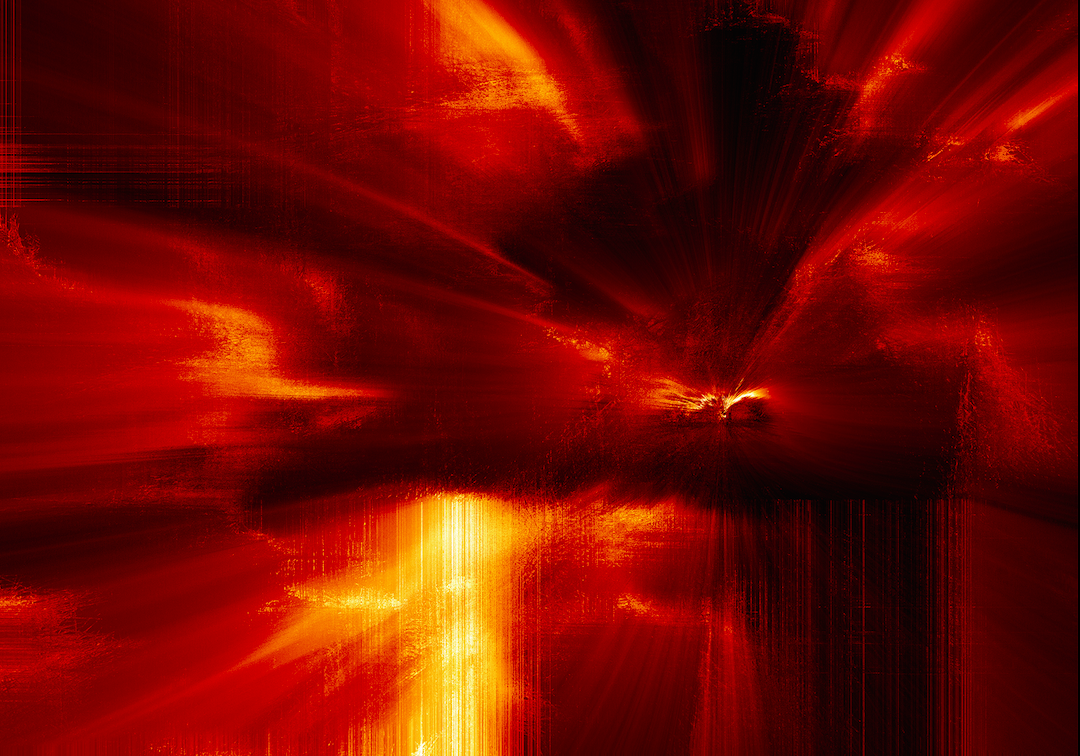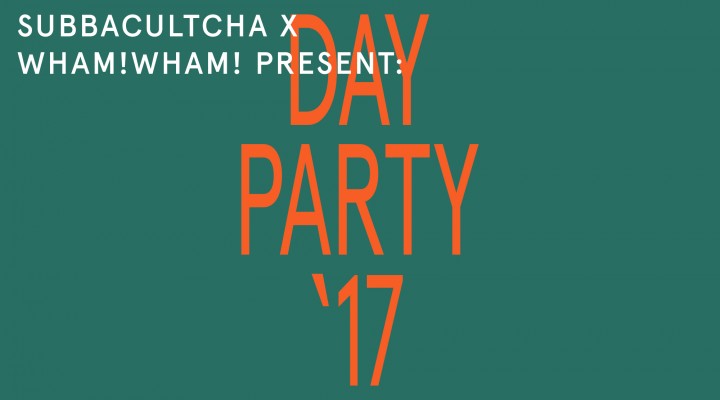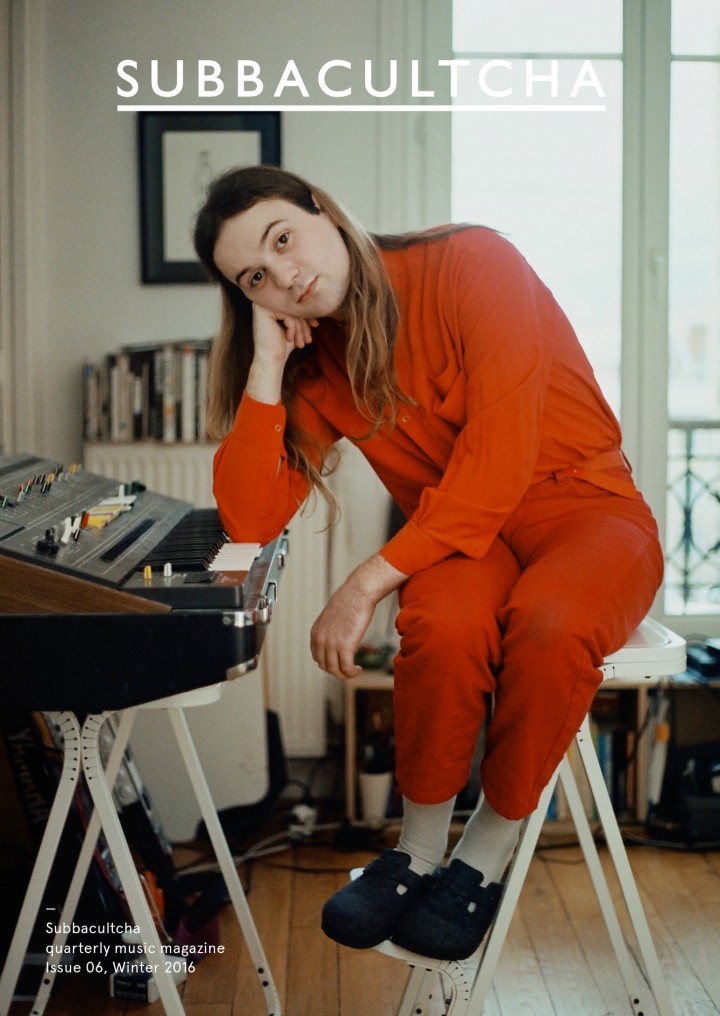Continuum
Interview by Jack Dolan
Stills and video of Continuum provided by Tarik Barri
Unlike most other a/v shows, Continuum’s music and visuals were built side by side from the ground up to create one symbiotic vision. The piece’s creators come from two very different places both artistically and geographically but producer Paul Jebanasam and audio visual artist Tarik Barri have managed to forge a succinct creative process, sometimes communicating ideas across continents. It seemed quite fitting then, ahead of their upcoming show in Muziekgebouw on 6 January, to interview them whilst Tarik was in Berlin and Paul in Sydney. For two guys who craft intricate abstract narratives through emailing pdfs and quick chats after shows, it was no surprise that a half hour Skype call was rather illuminating.
You’ve both grown up in very different parts of the world and now you’re both based in Western Europe. Do you think that informs how you communicate with each other artistically?
You’ll never be able to recreate the beauty or complexity of life itself but attempting to can get a whole different type of virtual life and complexities.
Tarik: Growing up in Saudi Arabia between the ages of five and ten just basically isolated me. Boredom arose being in a super hot country where it’s regularly 45 degrees in the afternoon, you really don’t want to go outside. I had a lot of spare time which I spent programming and exploring this whole idea of how the computer thinks.
What about you Paul, growing up in Australia is perhaps also isolated in a different way, are there any similarities with your experience?
Paul: Well I didn’t do anything productive, like learn to program. I was born in Sri Lanka and we moved to Sydney when I was 4. I grew up as a normal brown kid in Sydney. Raves were one place where everyone would get together and you could be different and it wouldn’t matter.
Tarik, looking at your past work with people like Thom Yorke and Monolake, do you see it as one constant progression or is each project a completely new approach?
T: Everything I’ve ever done has used the same software even though now only around two percent of the code remains the same. The same could be said for my own body cells. They say every eight years you completely change all your body cells. So the same goes for my software.
Who you’re working with must affect your process too?
T: Originally, with Robert Henke, we shared a more sci-fi aesthetic, working with computerised 3D technology. When I worked with Thom Yorke, he turned to me and said; ‘what would it be like if you did this whole three dimensional thing, in 2D?’ It was basically like saying can we do what I’m doing, without it being what I’m doing. It turned out to be one of the best requests. I became much more aware of the whole thing being a composition. I’m very often working with a specific border so that made me look at it more like a painting rather than as some kind of window into a 3D world.
I guess you have to find the balance between artistic freedom and achieving something for the person you’re working with.
T: Artistic freedom is never so much of an issue for me. I choose the people that I work with wisely and they choose me wisely so we start out from a basic trust.
So Paul, how did you choose Tarik? Were you just looking to do an a/v set generally or was it Tarik’s work specifically that appealed?
You actually hear the sound differently when you see imagery.
P: A bit of both, I knew I wanted to do one but I wasn’t sure how. It was a leap of faith really; I sent Tarik this crazy seven page pdf thinking he’s going to tell me this is ridiculous but instead he said yes, this is exactly what we should be doing. I’ve looked at that document since and it doesn’t really make sense at all.
Where you guys influenced by any other live a/v shows that you’ve seen?
P: I saw a lot of bad ones actually first and that really put me off. I like Philip Glass’ Qatsi trilogy. I saw that on my own at Sydney Opera House and that was the first thing that really blew me away.
T: I’m often quite unaware of what’s happening around me. Initially I was very inspired by Alex Rutterford’s work with Autechre, as well as people like Chris Cunningham. These days Jesse Kanda’s work with Arca, they’re doing really cool work together. But it’s often more about imagined or real natural processes. Something I discovered recently is simply to look at the sun through my eyelids and really study how that creates tiny rainbows because of the way the light bends and then discover how those change with the muscle flickerings of my eyelids. Of course you’ll never be able to recreate the beauty or complexity of life itself but attempting to achieve such things you can get a whole different type of virtual life and complexities.
Tarik, do you always have a clear idea of what you’re going to do on stage?
T: The structure is pretty set, I could change it if I wanted to but I don’t want to. I do improvise, make decisions and learn every time but it’s usually in a very subtle way. As I’ve heard Paul’s music over and over again, I’ve started to hear more layers and that implored me to make subtle changes and add more layers within my own work.
P: The plan for the visuals happened before two thirds of the album was even finished; the colour spaces and the kind of imagery it was gonna be definitely gave me a sense of, well one parts going to be really energetic or one parts going to be really quiet and distant.
Do you feel like working with visuals gives you a certain freedom?
P: Yeah because you actually hear the sound differently when you see imagery, particularly Tarik’s imagery. Time passes differently and you can actually have structures move in a different way. I played a gig recently that was in pitch black and everything feels completely different. It has strengths and weaknesses but the actual hearing process changes, it wasn’t as loud. Tarik’s work is so intense that the sound has to match. Without any visuals the whole thing became a lot quieter.
Paul Jebanasam and Tarik Barri will perform their audiovisual performance Continuum at Muziekgebouw aan ‘t IJ on Friday, 6 January. The night is a collaboration between FIBER and The Rest Is Noise, and will also feature Scott Monteith (aka Deadbeat) & Rainer Kohlberger performing their audiovisual performance Qawwali Quatsch.




